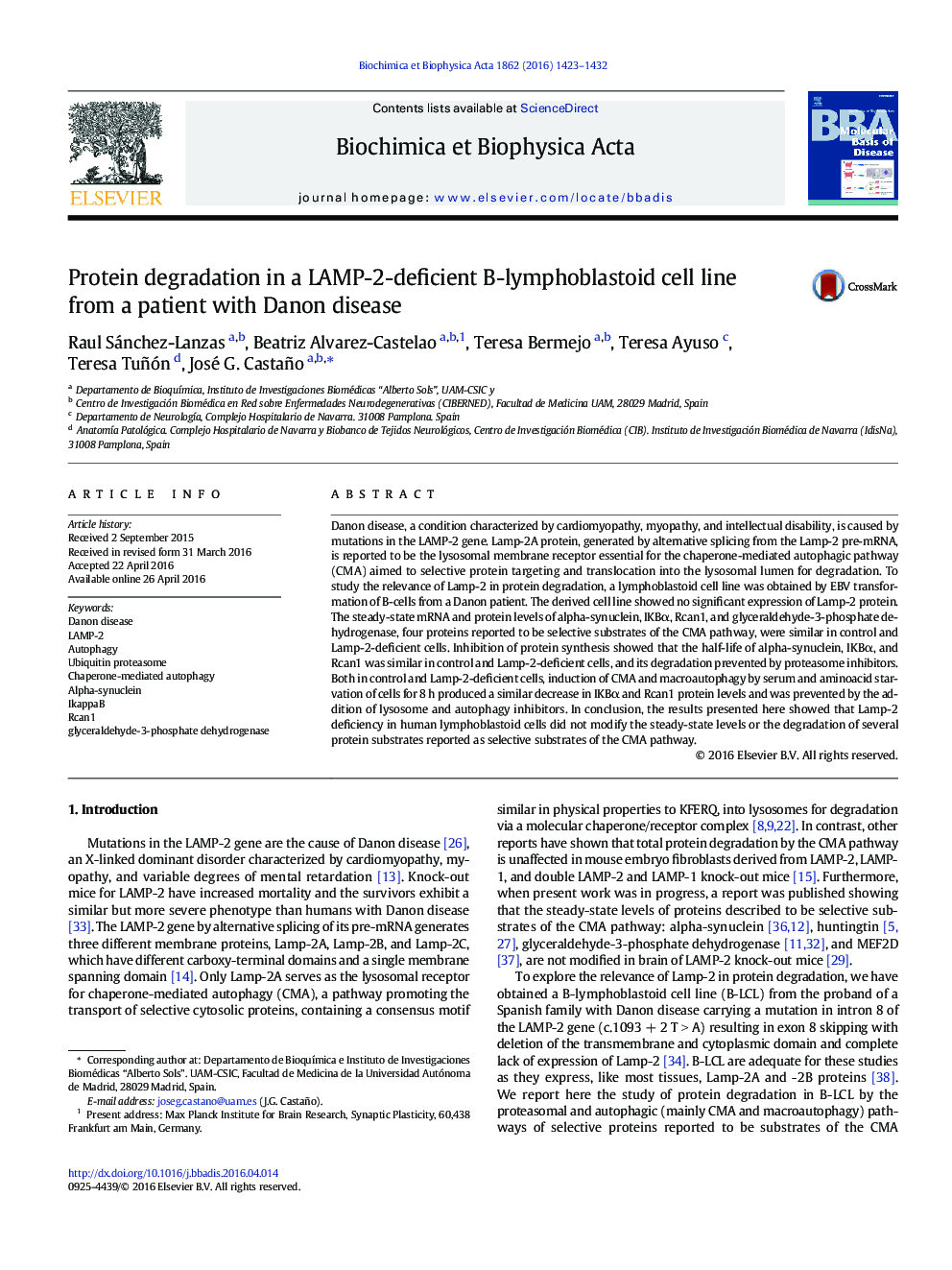| Article ID | Journal | Published Year | Pages | File Type |
|---|---|---|---|---|
| 8259173 | Biochimica et Biophysica Acta (BBA) - Molecular Basis of Disease | 2016 | 10 Pages |
Abstract
Danon disease, a condition characterized by cardiomyopathy, myopathy, and intellectual disability, is caused by mutations in the LAMP-2 gene. Lamp-2A protein, generated by alternative splicing from the Lamp-2 pre-mRNA, is reported to be the lysosomal membrane receptor essential for the chaperone-mediated autophagic pathway (CMA) aimed to selective protein targeting and translocation into the lysosomal lumen for degradation. To study the relevance of Lamp-2 in protein degradation, a lymphoblastoid cell line was obtained by EBV transformation of B-cells from a Danon patient. The derived cell line showed no significant expression of Lamp-2 protein. The steady-state mRNA and protein levels of alpha-synuclein, IÎBα, Rcan1, and glyceraldehyde-3-phosphate dehydrogenase, four proteins reported to be selective substrates of the CMA pathway, were similar in control and Lamp-2-deficient cells. Inhibition of protein synthesis showed that the half-life of alpha-synuclein, IÎBα, and Rcan1 was similar in control and Lamp-2-deficient cells, and its degradation prevented by proteasome inhibitors. Both in control and Lamp-2-deficient cells, induction of CMA and macroautophagy by serum and aminoacid starvation of cells for 8 h produced a similar decrease in IÎBα and Rcan1 protein levels and was prevented by the addition of lysosome and autophagy inhibitors. In conclusion, the results presented here showed that Lamp-2 deficiency in human lymphoblastoid cells did not modify the steady-state levels or the degradation of several protein substrates reported as selective substrates of the CMA pathway.
Keywords
Related Topics
Life Sciences
Biochemistry, Genetics and Molecular Biology
Ageing
Authors
Raul Sánchez-Lanzas, Beatriz Alvarez-Castelao, Teresa Bermejo, Teresa Ayuso, Teresa Tuñón, José G. Castaño,
